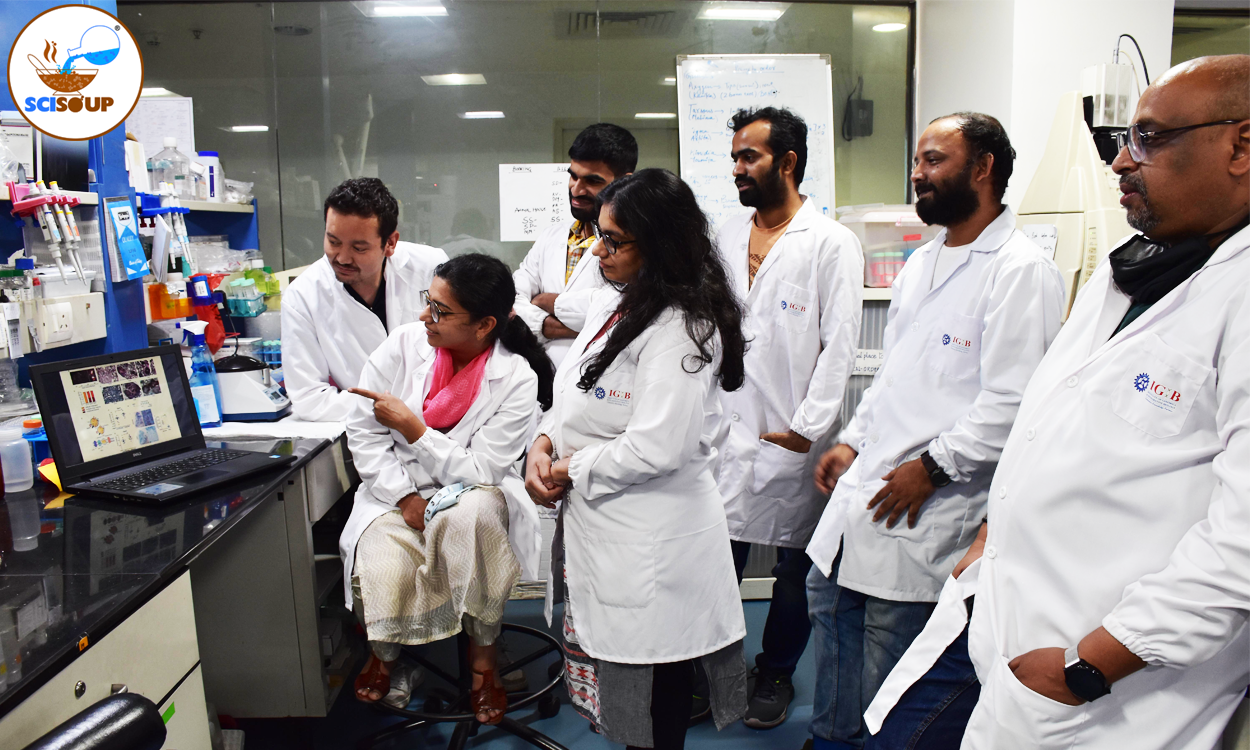
Tuberculosis is still a major disease burden for many parts of the world including our country. The current TB-treatment regime offers a cure for the disease when the infection is due to a drug sensitive strain of Mycobacterium tuberculosis. But it targets the bacteria alone and not the damage that the bacteria have caused to the human lung, bone and brain - wherever the bacilli are present. The cost is a hefty price of dwindling socio-economic status and health of the affected person.
To learn more, SciSoup spoke with study leader Sheetal Gandotra and her research team about their recent research findings published in the journal 'frontiers in Immunology'.
DEC 28, 2021 | BY RATNESHWAR THAKUR To learn more, SciSoup spoke with study leader Sheetal Gandotra and her research team about their recent research findings published in the journal 'frontiers in Immunology'.
In this SciSoup interview series “Unfolding Science With SciSoup”, the authors explain the key findings of this study, significance of their new results and its benefits for public.
What inspired you for this study?
We became interested in asking what it is about the local environment created in the infected lung by the bacteria that leads to serious damage. If we could understand this environment and what specific components regulate the damage, could we come up with targeted strategies to control the damage? One of the peculiar things about tuberculosis infected site in human organs is the replacement of the healthy cells with cells of our immune system. These are brought into the site of infection to control the spread of infection. But these cells respond by releasing some messages that can result in tissue damage also.
One of the noticeable properties of these cells is the presence of tiny compartments present within them that store lipids. These appear as droplets within the cell and are therefore called lipid droplets. We have been interested in understanding the relationship of these lipid droplets with the ability of these cells to create these messages and possibly contribute to damage to the host tissue.
In this study, we used a specific strain of mice that after being infected with Mycobacterium tuberculosis shows symptoms of TB disease which at the tissue level looks very similar to that seen in humans. We chose to lower levels of the lipid triglyceride, which is the most abundant lipid present in lipid droplets, using a small molecule (inhibitor) that targets an enzyme called DGAT1 (Diacylglycerol O-acyltransferase 1).
What is the main finding from your research?
We found that mice that were injected with this molecule (T863) progressed to lower levels of these damaging messages than mice that did not. In addition these mice also progressed to lower bacterial numbers than the mice that did not receive this molecule.
How would you explain your research findings and its significance?
We found that the DGAT1 targeting molecule actually had two different effects on the outcome of infection across the treated mice. Almost 50% of the mice exhibited this decline in inflammatory response and bacterial burden while the other half did not. We decided to investigate what was distinctive between these two groups.
We undertook two approaches, one was to profile all the genes present in the lungs of these mice to compare the levels of each of these between these two groups of mice. In the second approach we measured levels of lipids that have earlier been known to regulate tissue healing and damage. These are called Eicosanoids and can possibly be derived from triglycerides.
To our surprise, animals that received the triglyceride lowering treatment were actually having higher levels of most of these Eicosanoids in their lungs, suggesting that if lipid storage is prevented, lipid synthesis is rewired to produce more of these specialized lipids. What was interesting was that those mice that exhibited lower inflammatory response and bacterial numbers also had lower levels of these Eicosanoids than those that received the treatment but could not control their bacterial burden.
We found that this was happening due to lower levels of gene transcripts that help make these lipids. As an outcome of these lipid “signals”, neutrophils, a specific type of immune cells are recruited to infected lungs. In mice that had lower bacterial burden also had lower numbers of neutrophils. This study is a significant milestone in our understanding of how the tissue damage is regulated in case of TB infection. In addition, it provides a new means by which host targeted therapy can be achieved.
Share with us why is this study interesting?
This study is interesting because it opens up a new door to a potential host molecule or pathway to be targeted for treatment. DGAT1 inhibitors were developed for the treatment of obesity but when they were tested in humans, diarrhea was a major side effect which led to unfolding of the role of DGAT1 in gut health. So we did not even attempt the oral route of delivery in our study but an intravenous route of delivery of the compound. With this approach we were able to study the impact of triglyceride lowering in the TB lesions in the lung.
This study has provided a proof-of-concept that targeting DGAT1 enzyme activity at the site of infection can be beneficial. The reasons why this could be beneficial still need to be understood in detail but our study indicates that the danger signals that lead to bringing in neutrophils are targeted by this approach.
How will this research be useful to the public?
Currently the TB research community is actively focused on developing efficient host directed therapy as an adjunct TB treatment strategy, meaning something that would help the human immune system tackle the bacteria and minimize damage to itself while the antibiotics target the bacteria.
If we can find a way to deliver this DGAT1 inhibitor to the lungs so that it does not affect gut health, we may be able to take this molecule further for pre-clinical and clinical testing along-with existing anti-TB drugs. But this work also points towards the power of little store houses of lipids inside our cells that need to be studied if we want to find more ways to tackle infectious diseases.
Sheetal Gandotra, Principal Scientist at CSIR-Institute of Genomics and Integrative Biology (CSIR-IGIB), New Delhi, was interviewed by Ratneshwar Thakur, Science Communicator and Writer.
Journal Reference:
Inhibition of Granuloma Triglyceride Synthesis Imparts Control of Mycobacterium tuberculosis Through Curtailed Inflammatory Responses
Disclaimer:
SciSoup claims no competing interest.
